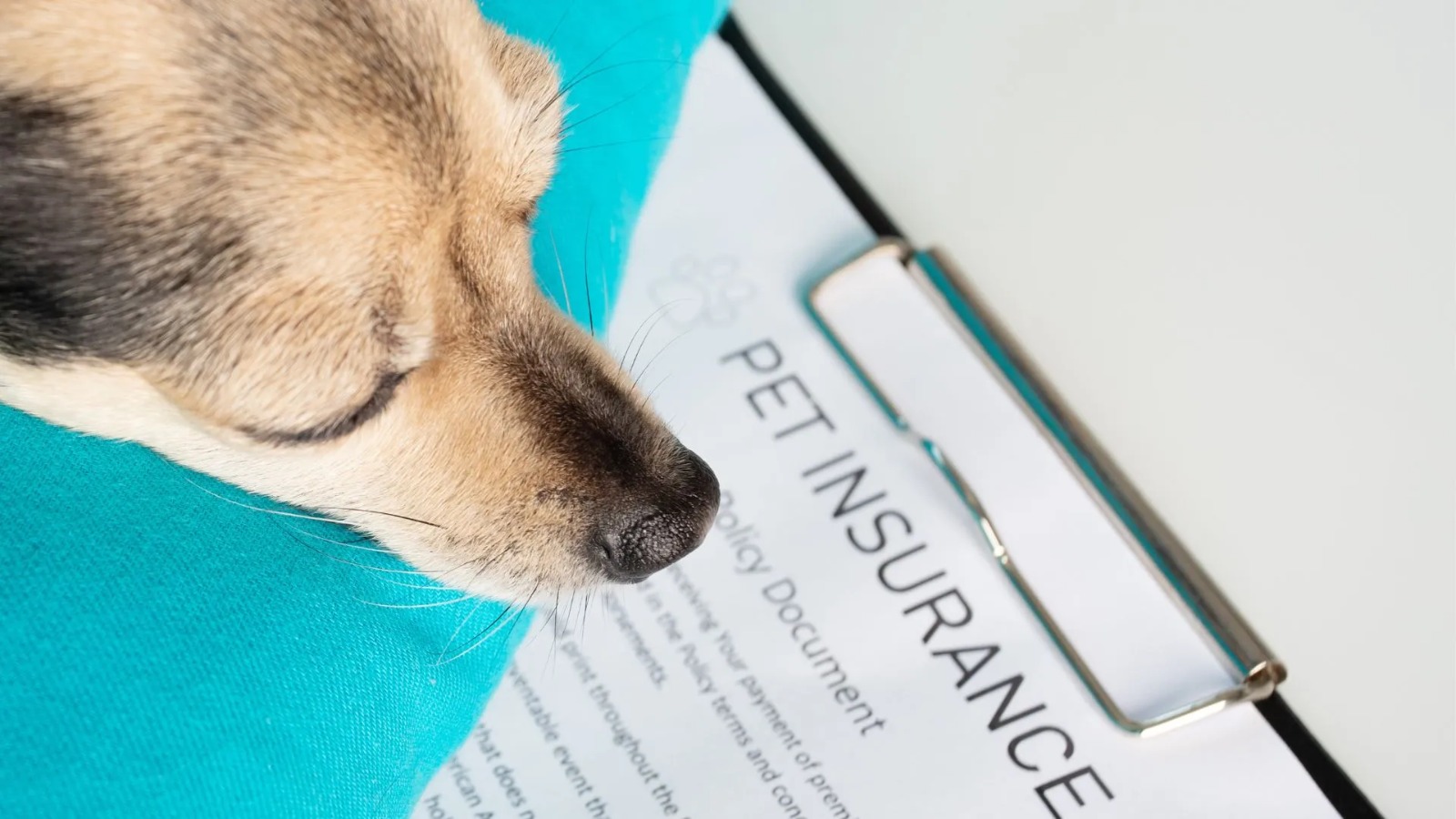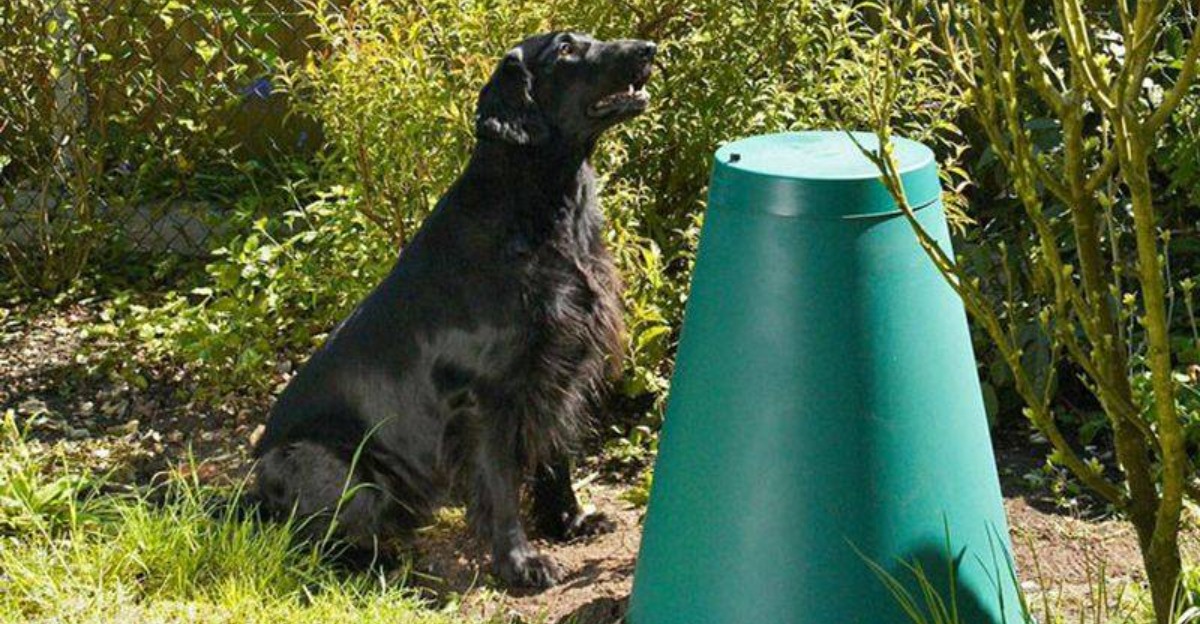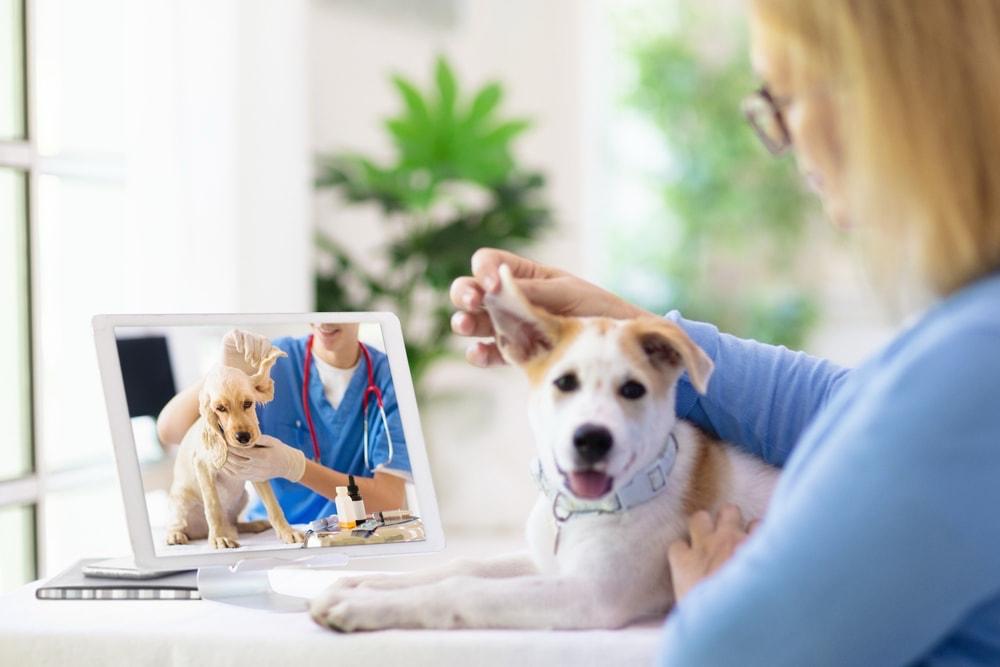
Pet ownership & insurance: what policies exist in India, what owners should demand.
With pet ownership rising rapidly across urban India, the need for reliable pet insurance has become more critical than ever. This article explores the current landscape of pet insurance policies in India, highlighting coverage options, limitations, and exclusions, while guiding pet owners on what comprehensive benefits they should demand to ensure financial protection and optimal care for their beloved companions.
🐶 Pet Star
56 min read · 6, Oct 2025

Pet Ownership & Insurance in India: What Policies Exist and What Owners Should Demand
Over the last decade, India has witnessed an impressive boom in pet ownership. Urbanization, rising disposable income, and changing social dynamics have encouraged families and individuals to bring pets—particularly dogs and cats—into their lives. Pet parents are increasingly viewing their animals as family members rather than property, driving demand for veterinary care, premium pet food, grooming, and wellness services. Yet, one critical area remains underdeveloped—pet insurance.
While health, vehicle, and life insurance are standard financial products in India, pet insurance is still in its infancy, despite its huge potential in safeguarding owners against unexpected medical costs and liability issues. This article dives deep into the current pet insurance landscape in India, evaluates the available policies, examines challenges, and identifies what pet owners should be demanding from insurers in the years ahead.
1. The Rise of Pet Ownership in India
According to industry reports, India’s pet population has surpassed 35 million, with dogs leading at nearly 70% of total pets. The pet care industry—comprising food, accessories, veterinary services, and wellness—is projected to exceed INR 20,000 crore by 2030, growing at over 15% annually. Pet humanization, or treating pets as family, has become a defining cultural shift.
With such growth, owners are increasingly concerned about rising medical costs. A single veterinary visit in a metro city can range from ₹500 to ₹2,000, while surgeries, hospitalization, or chronic treatments can cost ₹30,000 to ₹1 lakh or more. Vaccinations, tick treatments, and diagnostics add recurring expenses. Hence, pet insurance is emerging as an essential financial buffer.
2. Understanding Pet Insurance in India
Pet insurance is designed to cover the medical, accidental, and liability costs associated with owning a pet. Just like human health insurance, pet insurance involves paying a premium to an insurance provider, who in turn covers specified expenses under the policy.
However, unlike Western countries—where pet insurance is well-established and highly customizable—India’s market is nascent and limited in scope. Only a handful of insurers currently offer pet insurance products, and coverage is largely restricted to specific animal breeds, primarily dogs.
3. Major Pet Insurance Providers in India
(a) The New India Assurance Company Ltd.
One of the oldest public sector insurers, New India Assurance offers pet insurance under its “Dog Insurance Policy.”
Coverage Includes:
- Death due to accident or disease
- Permanent total disability
- Litter (puppy) mortality within 8 weeks of birth
- Theft (optional)
- Eligibility: Purebred, crossbred, and indigenous dogs aged between 8 weeks and 8 years.
- Exclusions: Pre-existing diseases, rabies, or conditions due to neglect.
- Premium: Approximately ₹200–₹300 per ₹10,000 sum insured, depending on breed and age.
(b) United India Insurance Company
Their policy primarily covers death due to accident or illness. The company may require a veterinarian’s certificate and microchipping for high-value dogs.
Coverage Includes: Accidental death, illness, and surgical expenses.
Exclusions: War, natural disasters, pre-existing conditions, and intentional harm.
Premium: Around ₹250–₹350 per ₹10,000 insured value.
(c) Oriental Insurance Company
Oriental offers coverage for dogs and other domestic animals.
Coverage Includes: Death from disease, injury, or accident.
Optional Add-ons: Theft cover, third-party liability.
Exclusions: Diseases due to neglect or lack of vaccination.
(d) Bajaj Allianz General Insurance
Among private players, Bajaj Allianz has pioneered pet insurance under its “Pet Dog Insurance Policy”.
Coverage Includes:
- Death due to accident or illness
- Surgery expenses
- Hospitalization
- Mortality and third-party liability (injuries caused by the pet)
- Eligibility: Dogs aged between 3 months and 10 years, with breed-based risk classification.
- Add-ons: Lost and found cover, long-term illness support, and overseas travel protection.
- Premium: Between ₹800 and ₹2,000 annually for basic cover; comprehensive policies can cost up to ₹10,000, depending on breed and coverage type.
(e) Future Generali & Digit Insurance (Emerging)
These newer players are exploring pet policies with digital-first models, allowing owners to file claims and upload medical reports online. They emphasize fast claim settlements, preventive health check-ups, and partnerships with veterinary clinics.
4. What’s Covered: Typical Inclusions
While policies differ, common inclusions are:
- Accidental death or injury
- Diseases and illnesses
- Surgeries and hospitalization
- Third-party liability (in case your pet injures someone or damages property)
- Theft or loss of pet
- Litter coverage (death of puppies/kittens)
- Cremation or burial costs (in some comprehensive plans)
Some insurers even reimburse diagnostic tests, X-rays, and vaccinations, though this remains rare.
5. What’s Not Covered: Exclusions to Watch Out For
Common exclusions include:
- Pre-existing medical conditions
- Rabies or distemper due to failed vaccination
- Intentional injury or neglect
- Death due to pregnancy or breeding complications
- Cosmetic or elective surgeries (like ear cropping or declawing)
- War, nuclear risks, or natural calamities
- Pets used for commercial purposes (like breeding or security)
Thus, while current policies provide basic coverage, they often exclude preventive care or chronic treatments, which limits their usefulness for many urban pet owners.
6. The Gaps in India’s Pet Insurance Ecosystem
Despite positive momentum, pet insurance in India faces significant structural and cultural challenges:
- Limited Awareness: Many pet owners remain unaware that such policies even exist.
- Restricted Coverage: Most policies cover only dogs, leaving out cats, birds, rabbits, or exotic pets.
- Low Claim Ratios: The process of documentation, verification, and claim settlement is cumbersome.
- Lack of Standardization: No uniform framework exists for assessing pet value, breed risks, or veterinary standards.
- Few Participating Clinics: Insurance integration with veterinary networks is still rare.
- Emotional Disconnect: Many pet parents feel insurance companies treat pets like livestock, not companions.
In contrast, countries like the UK, US, and Japan have customizable, high-limit pet insurance plans that include preventive care, chronic disease management, and behavioral therapy.
7. What Pet Owners in India Should Demand
To truly evolve into a pet-friendly nation, India’s insurance ecosystem must become pet-parent-centric. Owners and advocacy groups should push for the following reforms:
1. Comprehensive Health Coverage
Insurance should extend beyond mortality to cover:
- Vaccinations
- Preventive care
- Chronic diseases (arthritis, diabetes, allergies)
- Dental and behavioral treatments
- Emergency surgeries
2. Inclusion of All Pets
Policies should include cats, birds, rabbits, and exotic pets with specialized veterinary guidelines.
3. Integration with Veterinary Networks
Like human health insurance, pet insurance should connect directly with hospitals and clinics for cashless claims.
4. Transparent Premiums and Risk Classes
Pet owners deserve clarity on how breed, age, and medical history affect premiums.
5. Quick, Paperless Claims
Digital-first claims, simplified verification, and shorter settlement cycles would boost trust.
6. Third-party Liability Coverage
Essential in urban settings—if a pet bites or injures someone, owners should have protection from legal or medical liabilities.
7. Pet Loss, Theft, and Travel Protection
Modern policies should cover theft, disappearance, and even travel-related accidents (domestic or international).
8. Emotional Value Recognition
Policies should respect that pets are family, not property, offering compassionate support like grief counseling or cremation assistance.
8. The Future of Pet Insurance in India
The next decade could transform India’s pet insurance sector if insurers embrace data-driven risk modeling, AI-based claims assessment, and IoT-enabled pet wearables. Pet tech startups are already emerging, tracking health metrics through collars and integrating with insurance providers.
Increased awareness through pet influencers, vets, and NGOs will normalize pet insurance as a responsible step, not a luxury. The government and the Insurance Regulatory and Development Authority of India (IRDAI) could also play a role in standardizing policies and incentivizing innovation.
With India’s pet economy booming, insurance can become the backbone of responsible ownership, ensuring that every pet has access to timely and affordable care—without burdening families financially.
In recent years, pet ownership in India has grown exponentially, reflecting a broader cultural transformation in which pets are increasingly regarded not as property but as cherished family members. As cities modernize and lifestyles evolve, more Indians are adopting dogs, cats, and other companion animals for emotional support, security, and companionship. This trend, however, brings with it a significant rise in medical, grooming, and maintenance costs—making pet insurance an essential yet underdeveloped aspect of the Indian pet care industry. While traditional insurance products like health, life, and vehicle insurance are well established, pet insurance remains in its infancy, with limited awareness, restricted coverage, and few service providers. Pet insurance, in essence, is a financial product that protects pet owners from unexpected expenses arising from accidents, illness, or liability claims. In developed markets such as the United States and the United Kingdom, pet insurance is as common as human health coverage, offering customized policies that include surgeries, vaccinations, chronic diseases, preventive care, and even behavioral therapy. In contrast, India’s offerings are limited mainly to mortality cover for dogs, with little consideration for other species or comprehensive medical needs. Among the key players in the Indian market, The New India Assurance Company Ltd. remains one of the earliest providers, offering a “Dog Insurance Policy” that covers death due to disease, accident, or disability, as well as optional theft protection. Similarly, United India Insurance provides policies that cover death or illness, though the scope remains narrow. Oriental Insurance and Bajaj Allianz have followed suit with products offering protection against mortality, surgeries, hospitalization, and even third-party liability—if a pet causes injury or damage to another person or property. Bajaj Allianz’s “Pet Dog Insurance Policy” is one of the few that introduces digital claim filing and optional add-ons such as loss or theft protection and overseas coverage. Emerging private players like Digit Insurance and Future Generali are experimenting with tech-enabled, paperless insurance solutions that promise faster claim settlements and partnerships with veterinary clinics for smoother customer experiences. Typical inclusions in Indian pet insurance policies are accidental death, illness, injury, hospitalization, and sometimes third-party liability or loss of pet. However, there are several exclusions that owners must be aware of—such as pre-existing conditions, cosmetic procedures, unvaccinated illnesses, deaths due to negligence, or breeding complications. Most policies also exclude pets used for commercial purposes like breeding or guarding. The premium structure is relatively affordable, ranging between ₹800 and ₹10,000 annually, depending on the breed, age, and health of the pet. For instance, smaller Indian breeds are cheaper to insure than purebred foreign ones, which are more prone to hereditary diseases. Despite this affordability, the adoption of pet insurance remains minimal due to low awareness, bureaucratic claim procedures, and lack of integration between insurance companies and veterinary hospitals. Another key limitation is that most insurers in India still treat pets as “livestock” rather than companions, resulting in policies that fail to account for emotional value or preventive care. Compared to international standards—where insurance may include wellness check-ups, vaccination reimbursements, and dental care—India’s pet insurance ecosystem is rudimentary and reactive, stepping in only after an illness or accident occurs. This situation highlights the urgent need for reform and consumer-driven demand for better policies. Pet owners in India should push for comprehensive insurance that covers preventive healthcare, chronic diseases like arthritis or diabetes, dental and behavioral treatments, and routine vaccinations. Moreover, insurance should not be restricted to dogs alone; cats, birds, rabbits, and exotic pets also deserve inclusion, especially given the rising popularity of such animals among urban millennials. Integration with veterinary networks is another area of improvement; just as human health insurance provides cashless treatment at empaneled hospitals, pet insurance should enable direct payment systems with animal clinics, reducing out-of-pocket expenses and paperwork. Transparency in premium calculation is also vital—owners should understand how breed, age, and prior medical conditions affect costs. The industry should adopt a more digital-first approach, using mobile apps for paperless claim submission, e-vet verification, and instant settlement to build customer confidence. Another essential feature to demand is third-party liability coverage, particularly in dense urban settings where incidents like dog bites or property damage can result in expensive legal or medical consequences. Owners should also look for add-ons covering theft, loss during travel, or accidental death during transportation. Emotional support features—such as grief counseling, cremation support, or memorialization benefits—should also be considered in the future evolution of pet insurance products, as they reflect the growing sentiment that pets are integral members of the family. As India’s pet population continues to climb past 35 million, and the pet care market edges toward ₹20,000 crore by 2030, the demand for robust pet insurance is set to increase dramatically. Technology will play a key role in this transformation: wearable pet health trackers, AI-based health monitoring apps, and data-driven risk assessment tools could enable insurers to personalize plans and predict medical risks accurately. The Insurance Regulatory and Development Authority of India (IRDAI) can further accelerate this growth by setting standard frameworks for pet valuation, breed risk classification, and claim transparency. The future of pet insurance in India lies in shifting from a reactive, death-cover model to a proactive, health-first model. Awareness campaigns by veterinarians, NGOs, and pet influencers will be crucial in normalizing insurance as an essential component of responsible pet parenting. When owners begin to see insurance as a preventive care mechanism rather than a last resort, the industry will mature to match global standards. In summary, pet insurance in India stands at a critical crossroads—limited in coverage yet full of potential. The handful of existing policies are a step in the right direction but far from adequate for modern, urban pet families. Pet owners should demand comprehensive coverage that includes preventive health care, chronic disease management, all-species inclusion, and fast, digital claim systems. Only then can India transition into a nation where pet ownership is not just a matter of love and compassion but also of financial foresight and responsible care. With growing awareness and evolving consumer expectations, the coming decade could see pet insurance emerge as a mainstream necessity—protecting pets, empowering owners, and reaffirming the deep human-animal bond that defines compassionate societies.
Pet ownership in India has experienced a remarkable surge over the past decade, driven by changing lifestyles, increasing urbanization, higher disposable incomes, and a cultural shift toward seeing pets not merely as animals but as integral family members, and this growing emotional bond has, in turn, highlighted the financial and medical responsibilities that accompany owning a pet, making pet insurance an increasingly relevant yet still underdeveloped component of India’s evolving pet care ecosystem, where the majority of policies are limited in scope, primarily catering to dogs, particularly purebred and crossbred varieties, with coverage focusing largely on mortality due to accidents or illness while often excluding preventive care, chronic disease management, vaccinations, dental procedures, behavioral therapy, elective surgeries, or care for other species such as cats, birds, rabbits, and exotic pets, thus leaving a significant gap in comprehensive pet protection; the existing landscape in India is dominated by a few key public and private insurers, including The New India Assurance Company, which offers dog insurance covering death due to disease or accident, permanent disability, and optional theft protection, while United India Insurance, Oriental Insurance, and Bajaj Allianz provide similar offerings with variations in hospitalization, surgical coverage, and third-party liability protection, and emerging players like Digit Insurance and Future Generali are attempting to leverage technology to streamline claims through digital platforms, online veterinary verification, and faster settlements, yet despite these advancements, awareness of pet insurance among owners remains low, many potential customers are unaware of available policies, claim processes can be cumbersome, and insurers often treat pets as livestock rather than family members, thereby failing to recognize the emotional and practical significance of insurance for urban pet parents, and in addition, premiums vary widely depending on breed, age, and coverage type, ranging roughly from ₹800 to ₹10,000 annually, with high-value or exotic breeds incurring higher costs due to perceived medical risks, yet even with these financial considerations, comprehensive policies remain limited, often neglecting preventive healthcare, ongoing medication for chronic conditions like diabetes, arthritis, or allergies, dental hygiene, vaccinations, wellness checkups, and behavioral health, which are essential to modern pet care, and to ensure true value, owners should advocate for policies that integrate with veterinary networks for cashless treatment, offer transparent premium structures that clarify how risk factors like breed, age, and prior medical history affect pricing, provide coverage for third-party liabilities in urban settings where pets may accidentally injure people or damage property, and include add-ons for theft, loss, or travel-related accidents, as well as compassionate benefits such as cremation support, memorial services, or grief counseling, reflecting the increasing recognition of pets as family members whose care requires both financial planning and emotional support; moreover, the potential for technological innovation in the Indian market is substantial, with pet wearables, IoT-enabled health monitors, AI-assisted risk assessment, and data-driven predictive models capable of tailoring insurance plans to individual pets’ needs, thereby optimizing coverage, preventing disease through early detection, and ensuring timely medical intervention, while the Insurance Regulatory and Development Authority of India (IRDAI) could play a pivotal role in standardizing policies, breed risk classification, veterinary verification processes, and claim transparency, which would facilitate market growth and consumer confidence, and the industry as a whole is at a crossroads where the combination of rising pet ownership, increased awareness of the financial risks of veterinary care, and the advent of digital-first insurance solutions can transform pet insurance from a niche offering into a mainstream financial safety net, provided that owners demand broader inclusion of all pet species, comprehensive health coverage that extends beyond mortality, integration with veterinary clinics for cashless treatments, fast, paperless claims processes, transparent premium calculations, third-party liability protection, and benefits that acknowledge the emotional and social value of pets; without such reforms, current policies risk being perceived as inadequate and disconnected from the realities of urban pet ownership, leaving families to shoulder significant financial and emotional burdens when pets fall ill or face accidents, and as the pet care industry in India is projected to surpass ₹20,000 crore by 2030, there is a critical opportunity for insurers, policymakers, veterinarians, pet advocacy groups, and tech innovators to collaborate in creating insurance products that are consumer-centric, technologically advanced, financially accessible, and emotionally resonant, thereby enabling Indian pet owners to safeguard the health, well-being, and security of their animals, while also reducing financial stress and enhancing the human-animal bond; ultimately, responsible pet ownership in India increasingly entails proactive planning for medical emergencies, accidents, and unforeseen liabilities, and pet insurance, when adequately designed, can fulfill this role by offering comprehensive coverage, supporting preventive and curative healthcare, and providing peace of mind to owners who view their pets as irreplaceable family members, signaling a shift in cultural, economic, and regulatory frameworks toward a more mature, compassionate, and forward-looking pet care ecosystem that aligns with global standards while catering to the unique demographics and needs of Indian pet parents, and the success of such a transformation will depend on increased awareness, policy innovation, digital integration, and strong advocacy by informed pet owners who demand holistic, inclusive, and empathetic insurance solutions that protect the animals they love most.
Conclusion
Pet ownership in India is at an all-time high, signaling changing cultural values and stronger emotional bonds between humans and animals. Yet, while pet food, grooming, and accessories have advanced rapidly, pet insurance remains underdeveloped and underutilized. Only a handful of insurers offer basic policies, mostly limited to dogs and mortality coverage.
To create a truly pet-inclusive ecosystem, owners must demand comprehensive, transparent, and compassionate insurance models—ones that cover preventive care, chronic illnesses, and third-party liability while simplifying claims and including all species.
As awareness grows and insurers innovate, pet insurance in India is poised to evolve from a niche product into a mainstream necessity, protecting both pets and the people who love them.
Q&A Section
Q1: What is pet insurance, and why is it important?
Ans: Pet insurance covers medical, accidental, and liability expenses for pets. It is vital to protect owners from high veterinary costs and ensure pets receive timely care without financial strain.
Q2: Which companies offer pet insurance in India?
Ans: Major providers include The New India Assurance, Oriental Insurance, United India Insurance, and Bajaj Allianz. Emerging digital players like Digit and Future Generali are also entering the market.
Q3: Does pet insurance in India cover all types of pets?
Ans: Currently, most policies cover only dogs, especially purebred and crossbred ones. Coverage for cats, birds, and exotic pets remains limited but is expected to expand soon.
Q4: What costs does pet insurance typically cover?
Ans: It usually covers death due to accident or illness, hospitalization, surgery, and third-party liability. Some plans offer add-ons for theft, cremation, or loss.
Q5: Are there exclusions in pet insurance policies?
Ans: Yes, common exclusions include pre-existing diseases, neglect, cosmetic surgeries, and deaths due to pregnancy or unvaccinated illnesses.
Similar Articles
Find more relatable content in similar Articles

Social Media for Pets: Turning Your Pet into a Digital..
From playful puppies to charis.. Read More

Composting Pet Waste: A Greener Way to Clean Up...
As pet ownership continues to .. Read More

Virtual Vet Visits: Are Online Consultations Reliable?..
As pet healthcare embraces dig.. Read More

Pets and Mental Health: The Science Behind Emotional H..
Discover the profound impact o.. Read More
Explore Other Categories
© 2024 Copyrights by rPets. All Rights Reserved.